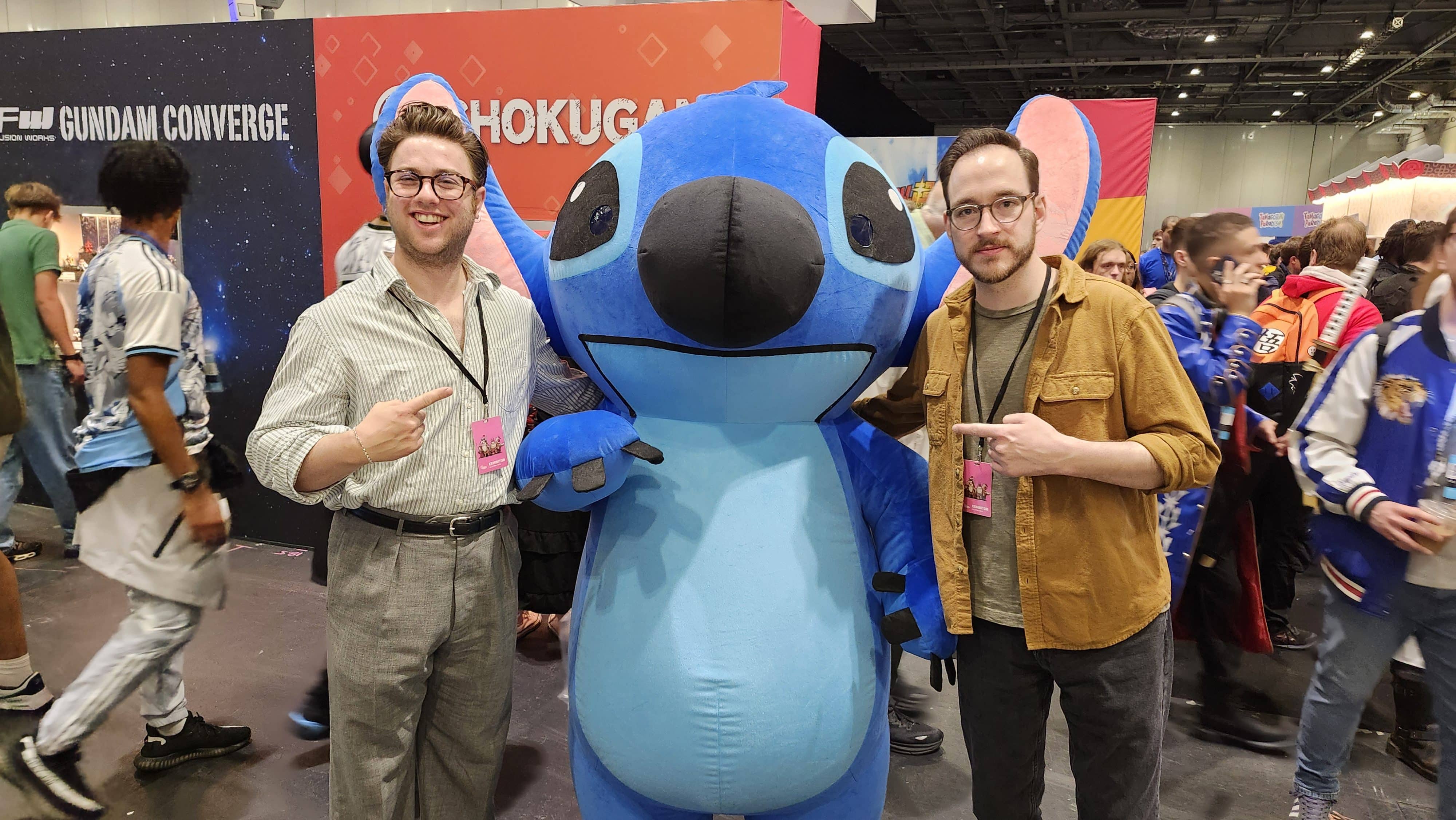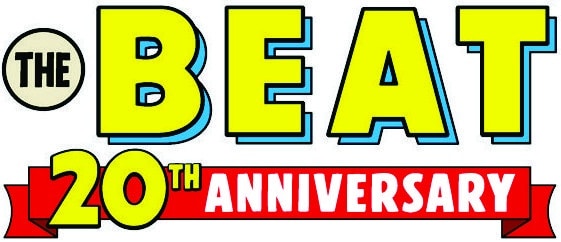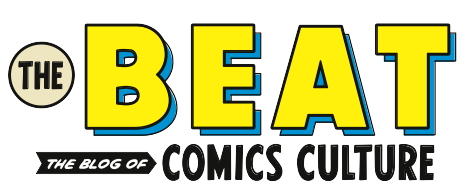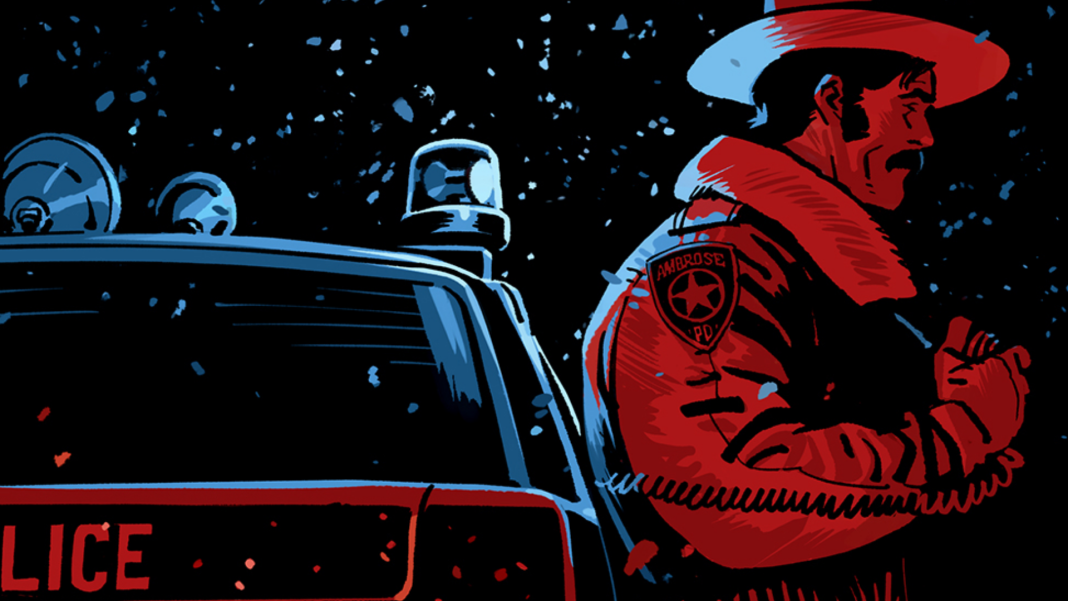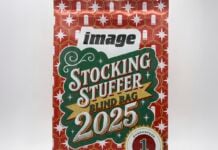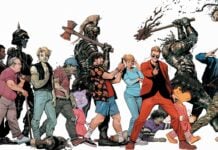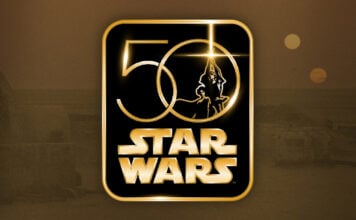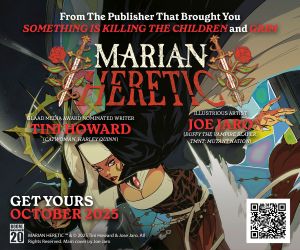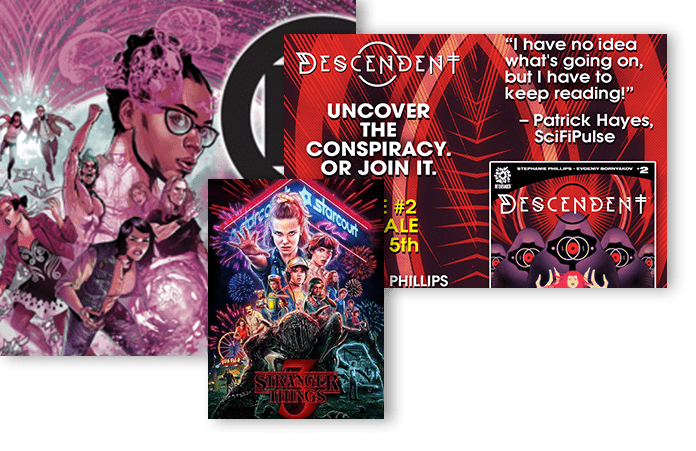Creative partnerships are a special thing. Writer Chris Condon and artist Jacob Phillips make one hell of a pair. Between their neo-western crime drama That Texas Blood and its incredible spin-off, The Enfield Gang Massacre, the two have proved their mettle as one of the best creative teams in comics. Condon’s smart, emotive writing combines with Phillips’ lush, striking artwork in the best way, creating memorable and moving comics. They’re only just getting started, and they show no signs of stopping, with an unannounced project in the works as well as a return to the world of That Texas Blood.
The Beat sat down with Condon and Phillips to discuss their creative partnership, how they bring out the best in each other, and what to expect going forward.
This interview has been edited for clarity.
JARED BIRD: Thank you both so much for your time. You’ve done a number of collaborations with each other over the course of your creative partnership, including That Texas Blood and The Enfield Gang Massacre. How did the two of you meet?
CHRIS CONDON: How did we meet?
JACOB PHILLIPS: Chris emailed me in… nineteen-tickety-two. I don’t know when it was.
CONDON: Probably 2016 or 2017. I was trying to get funding for a short film; I didn’t have enough money myself, so I was trying to get investment from somewhere. It’s hard to get investments because investors are putting money into your talent, and it’s hard to show people a script and go ‘maybe you like this?’ It’s hard for them to see it and understand what it is. I figured I could get concept art made. I was reading Kill or Be Killed at the time, and Jacob was doing the illustrations for the film essays in the backmatter of the issues. I reached out to him through his DeviantArt page, something like that.
PHILLIPS: I think it was that, yeah.
CONDON: I asked him if he was interested. I didn’t have a lot of money, but if he was interested in the script, maybe he’d want to do it. Luckily, he liked the script and wanted to do it, and that’s how we met. It was very much a business relationship.
PHILLIPS: Yeah. A while went by, and then you got back in touch, asking if I wanted to work on it as a comic instead.
CONDON: He had asked a couple of times how everything had been going. I’d always respond ‘it’s shit!’.
PHILLIPS: It all just went from there. We put together a pitch for That Texas Blood, sent it out to five or six different publishers, and heard back from Image Comics. It was a few months later, though.
CONDON: It was five or so months later, yeah.
PHILLIPS: We had written it off a bit, like ‘oh, this isn’t going to happen.’ Then Eric Stephenson reached out and said he liked the look of the book, and we went from there.
CONDON: It’s funny, there’s always an assumption there because Jacob’s father is who he is. People assume we rode coattails into Image. Not true!
PHILLIPS: I met Eric when he was over in the United Kingdom for a show, and he told me he had no idea who I was. I’d already been coloring my father’s stuff for a while, but he didn’t realise the connection.
CONDON: He liked that we didn’t put it into the book. There appeared to be no connection at all. We got in on our own merit. I sent it to the submissions portal on their website. Emailed them. I really didn’t think we’d get Image, and it ended up working out.
BIRD: I remember when I first met Jacob I told him that I read his books first, so I had the inverse thing; when I read Sean Phillips’ work, I went ‘Oh, that’s Jacob’s dad!’
PHILLIPS: He likes it best when people think we’re brothers. Even when we’re sitting next to each other, people have assumed that. He’s thirty years older than me!

BIRD: What has it been like to work with Image Comics across your creative partnership?
PHILLIPS: It’s great. They let us do whatever we want, essentially. There’s no creative editor. It gets proofread, and that’s pretty much it. We will say, “We’re thinking of doing a new arc, and it’ll come out whenever it’s done,” and they go, “Okay.” Sometimes, they’ll say, “Maybe aim for this month instead,” but leave us to get on with it. When we pitched the idea of doing The Enfield Gang Massacre, they were immediately saying, “Sounds good to us!”
CONDON: We floated the idea of doing The Enfield Gang Massacre to Eric. I sent him an email about wanting to do a spin-off, not sure how much we should brand it and link the two together, so we had some discussions about that. He was pretty much on board from the start.
PHILLIPS: It’s total freedom. The ideal place for us to be, really.
CONDON: It’s also the best deal in comics. You get to own your comic, what’s better than that? That helps creativity, when it’s all yours and it’s truly your vision and your book at the end of the day.
BIRD: Chris, how has the experience of working with Jacob changed your creative process?
CONDON: Everybody has to measure up to Jacob!
PHILLIPS: Ahahah.
CONDON: He’s been great. Like we were saying before, it very much began as a business relationship where I’d send him things and then he’d send me things and we’d barely talk. It grew into this space where we talk very often. When I was on Instagram, we’d talk on there, and now it’s graduated to WhatsApp. We’re really serious now. Haha. I learned how to collaborate, really, with Jacob. I learned how to write in a way that helps him find the story and let him run with it and do what he wants. I try not to dictate too much, and that’s what I try to bring to every collaboration I’m a part of. It really set the standard for me, in terms of my comics work in general.
BIRD: Likewise, Jacob, how has the experience of working with Chris changed your creative process?
PHILLIPS: It’s difficult to know. That Texas Blood was the first book for both of us. I was coloring, but it was the first time I’d had a script written for me. We both learnt how to do it together over that process. It’s hard to quantify what’s actually changed, because we just do it as we do it and trust each other to get on with it. We have a very informal way of working now, where we will message each other all the time, and it’s not strictly business. It’s great. It’s what a lot of people strive to do throughout their career, finding someone they work well with and regularly with, and we lucked out on getting that on the first try.
CONDON: Yeah.
BIRD: Chris, how does your approach to creator-owned work differ to licensed series?
CONDON: I try to make sure it’s not that different, to be honest with you. I try to approach it the same way. The biggest change is that the deadlines are different; with licensed work, the deadlines are very tight. In general, I try to approach it in the same way. There’s a reason I’ve been hired to do Green Arrow or Ultimate Wolverine; I have a certain way of telling a story, a distinct voice as a writer, and they want me to do what I do. I want to bring that into what I do with major publishers, and I think I have successfully so far. I want to be true to myself, not come in and be a hack. Turning stuff in just because it’s due. I want to have something to say.
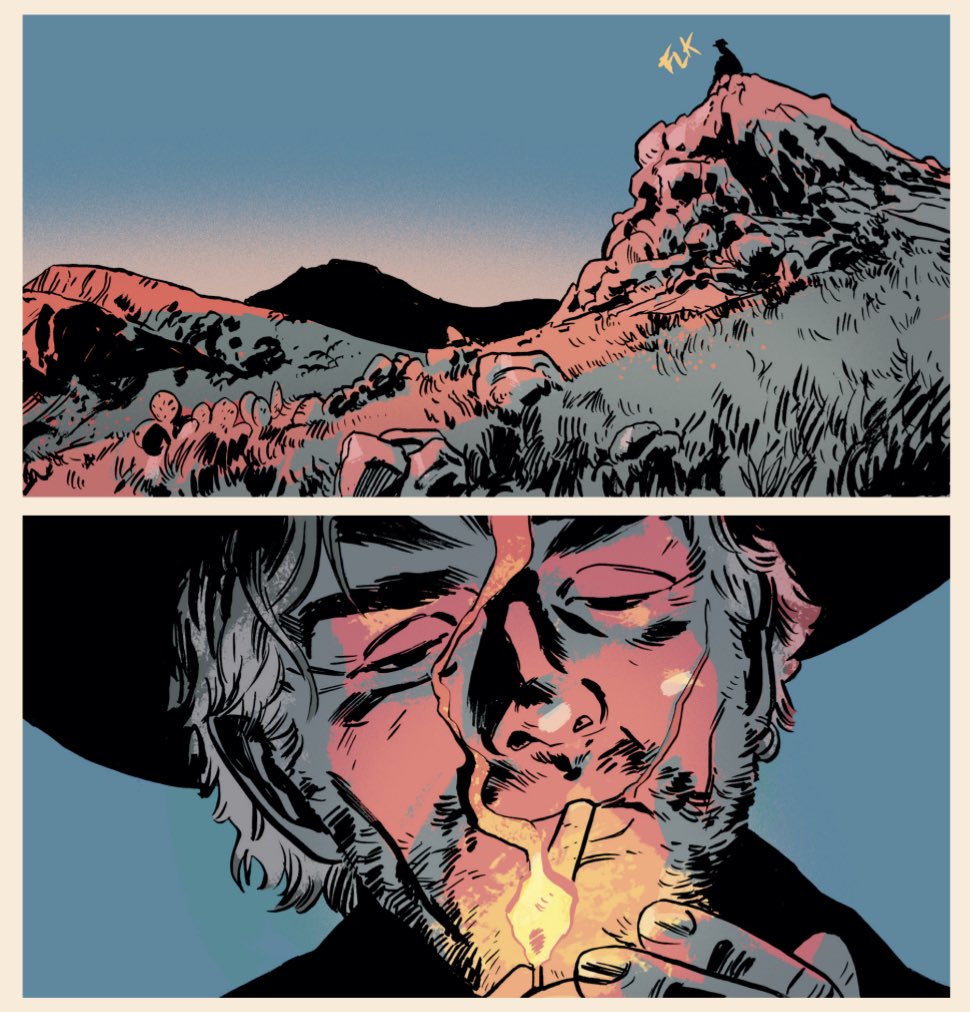
BIRD: Jacob, you’ve tried a lot of things over the course of your career, including painting Criterion Collection covers in addition to your comics work. Do you enjoy challenging yourself as an artist?
PHILLIPS: Oh no, I hate it.
CONDON: Ahaha.
PHILLIPS: With something like a Criterion cover, there’s a lot more pressure. It’s the one thing: you get paid a lot more money, and a lot of people are going to see it. Sometimes when you’re doing a variant cover for a comic, they might sell a hundred of them. They might be an incentive cover or something like that. There’s more space to experiment there. You can try things out, and if it doesn’t work, it doesn’t really matter as long as they’re happy with it and it looks good. You’re not held to that for as long a period. If you’re working on a comic, you’re on it for months. You have to stick to whatever you’ve decided at the start. A cover gives you a lot more freedom to try something out for the day, knowing that tomorrow you can try something else. I hope I’m constantly getting better at interiors. Same with colors, every time I start a new project, I try to mix things up and do things a bit differently. You might not even notice when you’re reading it, but I can tell the difference. With That Texas Blood, each arc is different. The first arc was totally digital, the second was traditional. I try to adapt my work slightly to best serve the story. To use as many aspects of it as I can as a storytelling device, so that everything serves the book as a whole rather than trying to make it pretty. Hopefully, that’s a bonus, but it’s about serving the story. I’m constantly trying to get better.
BIRD: Chris, throughout That Texas Blood and The Enfield Gang Massacre, you’ve always used supplementary back material to flesh out the world and story. What tips would you give writers trying to make their setting and characters feel real and lived in?
CONDON: I feel like the backmatter really helps that because it helps ground the story, especially when it’s realistic ephemera. In the second arc of That Texas Blood, the supplementary material really helped establish histories for the characters that you weren’t getting in the actual sequential storytelling. It really added a lot to the characters and their histories. The Enfield Gang Massacre was born out of the backmatter material. I like to pepper in things like that, which helps flesh out a world and its characters. You only have so much real estate on the page, and it depends on how deep you want to go into it with the characters and their internal dialogue, but I find that it’s probably the best way for me to do it. I think that it’s a really interesting way to stretch your legs as a writer as well, working in different ways and trying out different voices. Trying to write an article from 1920 as opposed to 1980. It’s an interesting way to flex your muscles as a writer and deliver material at the same time.

BIRD: Jacob, you recently wrapped up work on a comic adaptation of Francis Ford Coppola’s Megalopolis alongside Chris Ryall. What was that experience like?
PHILLIPS: It was really exciting. I remember getting the initial email from Chris Ryall, telling me he had this book that he couldn’t tell me that much about, but he wanted me on board. It involved a big director. I didn’t know him beforehand, so it came out of the blue for me. I was working on The Enfield Gang Massacre, and I remember texting Chris Condon asking if I should do it, and he told me to go for it. I emailed Ryall back and he told me it was Francis Ford Coppola, so that was a moment of “Ohh, okay!” I’m a big fan of his films, so it was a no-brainer to say yes to doing it. It turned into a much longer project than I expected it to be, mostly because I was doing it between issues of The Enfield Gang Massacre and Newburn. It went on the back burner a little bit, and I had to really get in gear after I wrapped up Newburn. It was great, though, and I’m looking forward to it finally coming out. I finished it almost a year ago, so I’ve been waiting eagerly to hold it and not feel like it was some sort of weird fever dream.
BIRD: Is there any particular moment from the comics you’ve collaborated on that you’re both especially proud of?
CONDON: I think something I’d want to highlight is a sequence in the third volume of That Texas Blood, specifically a moment between Joe Bob and Lou. It was a really quiet, emotional moment, but it’s all very understated. I thought we both handled ourselves really well, because that’s a delicate line to walk, especially in comics, which are usually huge and bombastic. We were telling a very quiet, personal moment between two characters who love each other in their own way, and trying to convey that they both care about each other. That was one of the moments where I realised this is what I want to do for the rest of my life; capture moments like that, that feel very real.
PHILLIPS: I like it when Lou hits the killer on the head with a big obelisk. I’d say that’s probably my peak. CONDON: You have no idea the googling I had to do to figure out what that thing’s called.
BIRD: I think as a reader, there’s a certain magic to the final issue of The Enfield Gang Massacre, and the moment where everything unwinds a bit and there’s a similarly understated, emotional series of pages right before their end. I remember thinking there was something deeply special about that.
PHILLIPS: Yeah, I think that the final issue of The Enfield Gang Massacre is probably our best work. I think it could be.
CONDON: So far!
PHILLIPS: Yeah, so far. That you’ve seen! That was probably us working at our strongest as a unit.
CONDON: I felt like that was a big swing, too. I didn’t know if it was going to work.
PHILLIPS: The number of people who’ve come up to me at shows and talked to me about that sort of fantasy sequence towards the end. They always say, “You got me.” I was surprised, because visually, we’d already told them.
CONDON: Yeah. We’d established earlier that this is how dream sequences work in this story. We set it up, but we didn’t want to hit people over the head with it. When we brought it back, I think most people were reading through it and probably figured it out, but it took them a minute.
PHILLIPS: That’s another example of what I was mentioning earlier, about how every aspect tells our story. That was a visual clue to what we were doing. It all works together.
BIRD: I remember reaching out to Jacob when I got the issue, but I think I forgot to mention that I was crying when I read it.
CONDON: I genuinely love hearing that. I write, and he draws, and we obviously are working with emotions in these stories. I feel the emotion when I’m writing it, and you have to hope that readers feel those emotions too. You can only hope that will happen, you don’t know. We’re really fortunate; we’ve gotten great responses from readers. At the end of the second arc of That Texas Blood, we got an email from a guy who had read comics for forty years, but ours was the first comic that ever broke him.
BIRD: Oh wow.
CONDON: To be in that position, where it was the second thing we’d ever done, and I don’t think I ever expected to really do much outside of That Texas Blood, to have that kind of impact on people was really special.
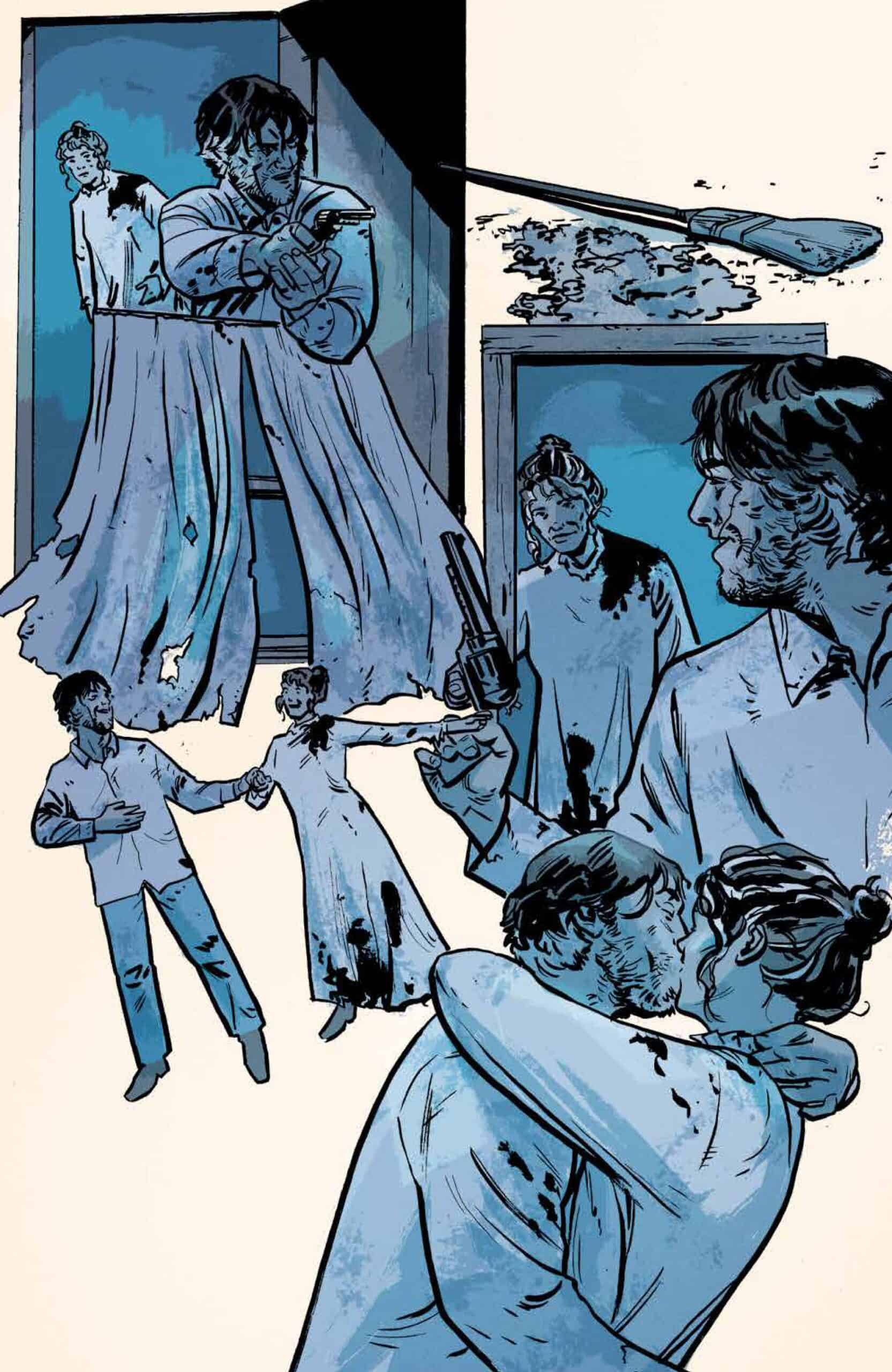
BIRD: How will your upcoming project differ from your previous collaborations?
CONDON: How does it differ from our previous collaborations?
PHILLIPS: It’s basically the same.
BIRD: Ahaha.
CONDON: We are working with one of the biggest publishers.
PHILLIPS: It’s definitely got a lot of what we do in it, but it’s more action-packed than what you’d expect from us.
CONDON: Yeah, it’s definitely an action-adventure story.
PHILLIPS: John Harris Dunning said that the look of the series was perfect for me, and I agree. The era that it’s in, and the look of everything, it’s ideal. I think people are going to like it.
BIRD: It fits so perfectly with your style. A match made in heaven.
CONDON: It’s fun to get to see him drawing with more shadow. It’s really impressive and made his work even better than it was before.
PHILLIPS: There’s a slight science fiction element to it that I’ve not really touched on before. It’s all-new and stretching my muscles. There’s a sequence in the fourth issue, where I texted Chris and asked him ‘why have you made me draw this?’ It’s going to be good, but god I don’t want to draw that.
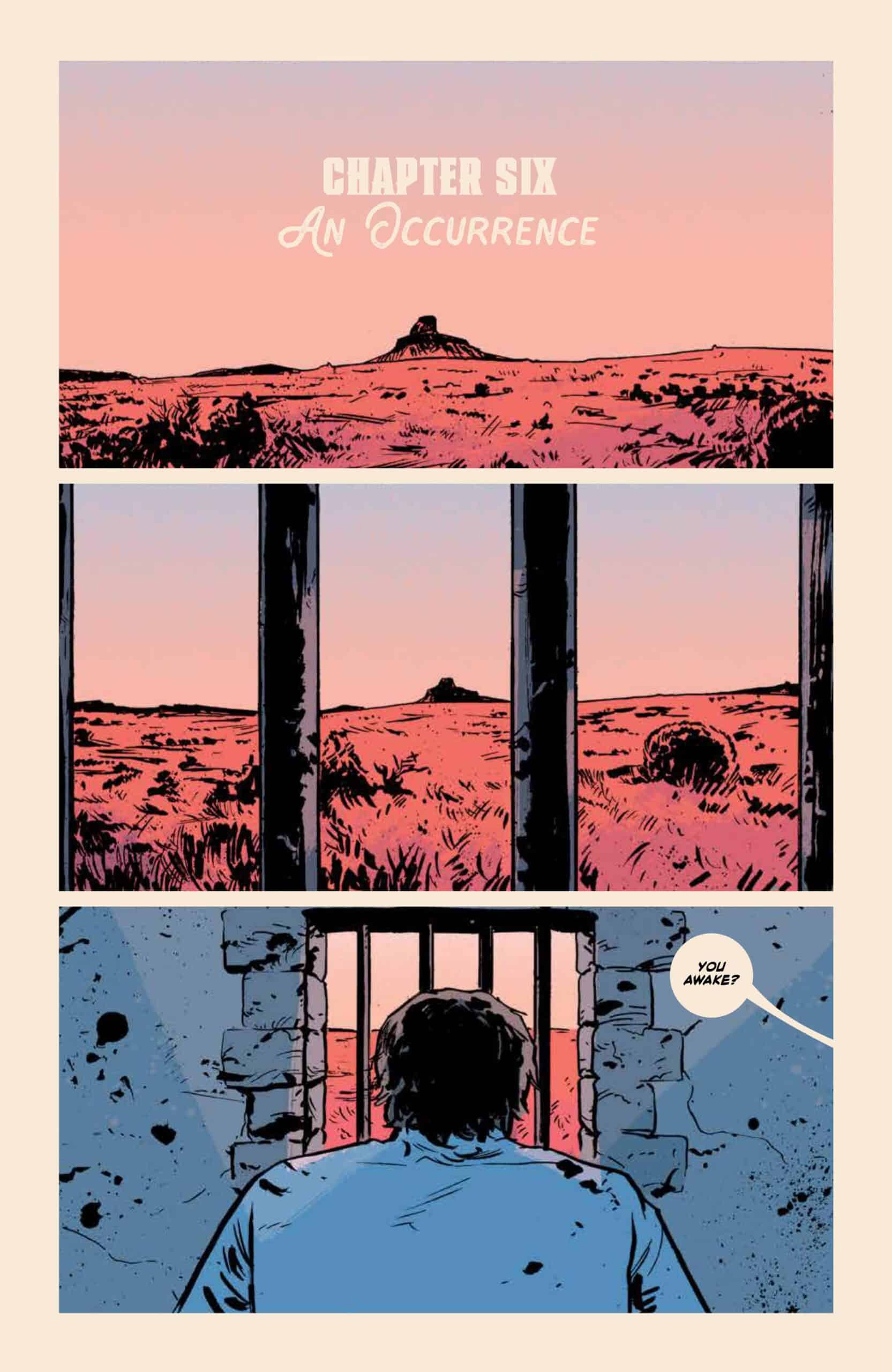
BIRD: Should readers expect a return to That Texas Blood soon?
PHILLIPS: Yeah. We’re hoping next year, to follow our upcoming project.
CONDON: We were planning on coming back to That Texas Blood a little earlier, but we decided to push it back a little bit further because of this new book.
PHILLIPS: One will go straight into the next.
CONDON: That way we will have a continuous stream of Condon / Phillips collaborations coming out.
PHILLIPS: For the first time ever.
BIRD: What do you want readers to take away from the series you create together?
PHILLIPS: The desire to buy more!
CONDON: I think we want readers to feel like they have had an experience they couldn’t have had reading any other book, or in any other medium. Having an emotional impact on people, getting them to feel it was authentic and worth their time. Having people feel like these characters are their friends. That’s the most we can hope for.
PHILLIPS: What he said.
BIRD: Thank you both so much for your time.
